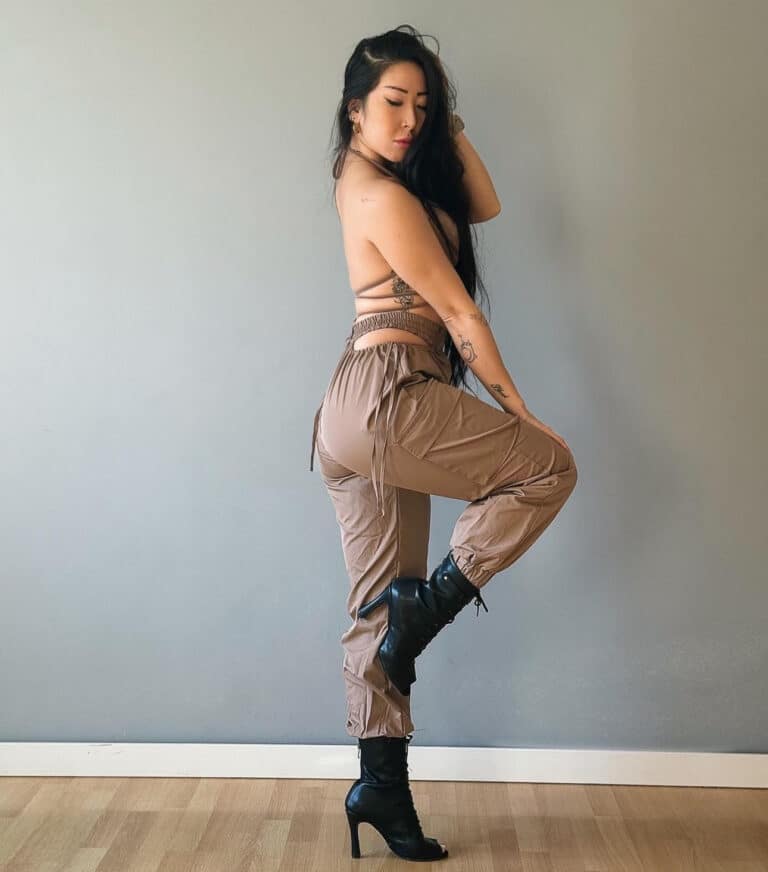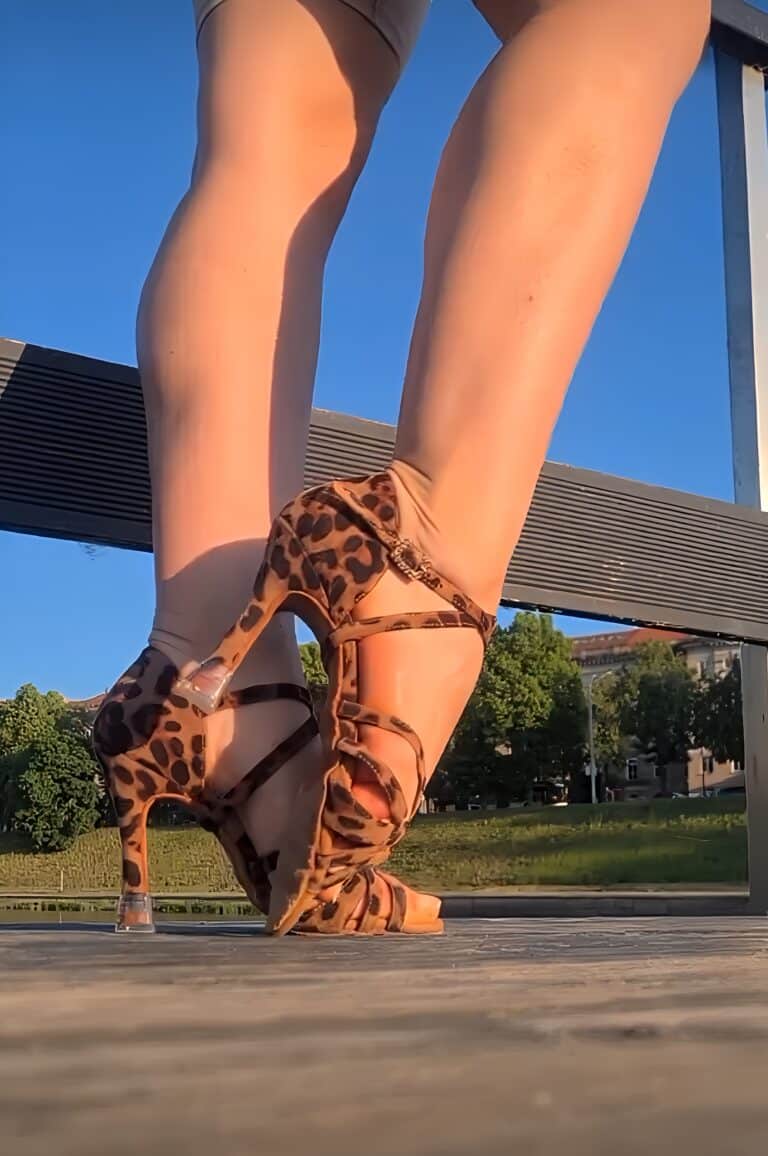No products in the cart.
Go Back to Shop
All CategoriesBachataBachataBachataBachata dance shoesBachata Shoesbachata sneakersBalletBallet shoesBallroom DanceBallroom Dance ShoesBallroom dance shoesBarefoot dance shoesBlack dance costumesBlack salsa shoesBlowout BrushCanvas ShoesChaussures de danseChaussures de danse latinesChaussures de dansesChaussures de danses latinesComemrcial Heels Dance ShoesComfortable dance shoesCommercial Heels DanceCuban SalsaCuban SonCustom Dance ShoesDancedance bootsDance Classesdance costumesDance Hair AccessoryDance quotesDance ShoesDance Shoes AccessoriesDance shoes MelbourneDance shopdance shop near meDance SneakersDance WearDancers LifeEarringsFlamenco dance shoesFrequently Ask QuestionsGold heelsHeel boots for womenheelsHeels danceHeels DanceHeels Dance ShoesHeels for womenIrish tap Shoesjazz danceJazz Dancing ShoesJazz ShoesKizomba dance shoeskizomba melbourneKizomba ShoesKizomba shoesLatin DanceLatin danceLatin Dance ClassesLatin Dance Shoeslatin dance shoesLatin Dance Shoes Australia Brand Representativeslatin dance shoes Gold CoastLatin Dance Shoes MelbourneLatin Dance Shoes SizeLatin Dance Shoes Size 2Latin Dance Shoes Size ChartLatin dance shoes sydneylatin shoesLeather Dance ShoesLifestyle SneakersLine Dance ShoesPerformance SneakersPleaser ShoesPointe shoesPole Dancer ShoesPole Dancing ShoesPole ShoesRueda de CasinoRueda De CasinoRumbaRumba CubanaRumba CubanaSalsaSalsa Dance ShoesSalsa Dance TutorialSalsa Shoessalsa shoes sydneySalsa sneakersSexy Heelssexy heelsShoe TypesSizes ShoesSizing Guide ShoesSneakersSon CubanoSon CubanoSwing Dance ShoesSwing ShoesSwing ShoesT-bar shoestango shoesTango ShoesTap ShoesUncategorizedWeddingwoman heelsWomens dance boots
Is It OK To Dance Barefoot?
by Clement
Dec 31, 2022
Dancers Life, Bachata dance shoes, Bachata Shoes, Ballet, Ballet shoes, Ballroom Dance Shoes, Ballroom dance shoes, Barefoot dance shoes, Canvas Shoes, Chaussures de danse, Chaussures de danses, Dance Shoes, Flamenco dance shoes, Irish tap Shoes, Latin Dance Shoes, Pointe shoes, Salsa Dance Shoes, Salsa Shoes, Swing Dance Shoes, Tango Shoes, Tap Shoes
Is It Ok to Dance Barefoot ? Deciding whether it’s acceptable to dance barefoot involves evaluating both the potential benefits and the risks involved. Although many dance styles, including contemporary, modern, and Afro-Jazz, often encourage barefoot dancing for a more tactile experience with the floor and improved proprioception, it’s essential to consider the environment and personal health. A direct connection with the dance floor can indeed enhance a dancer’s awareness of their movement and balance, giving them a greater sense of control.
Is it ok to dance barefoot ?
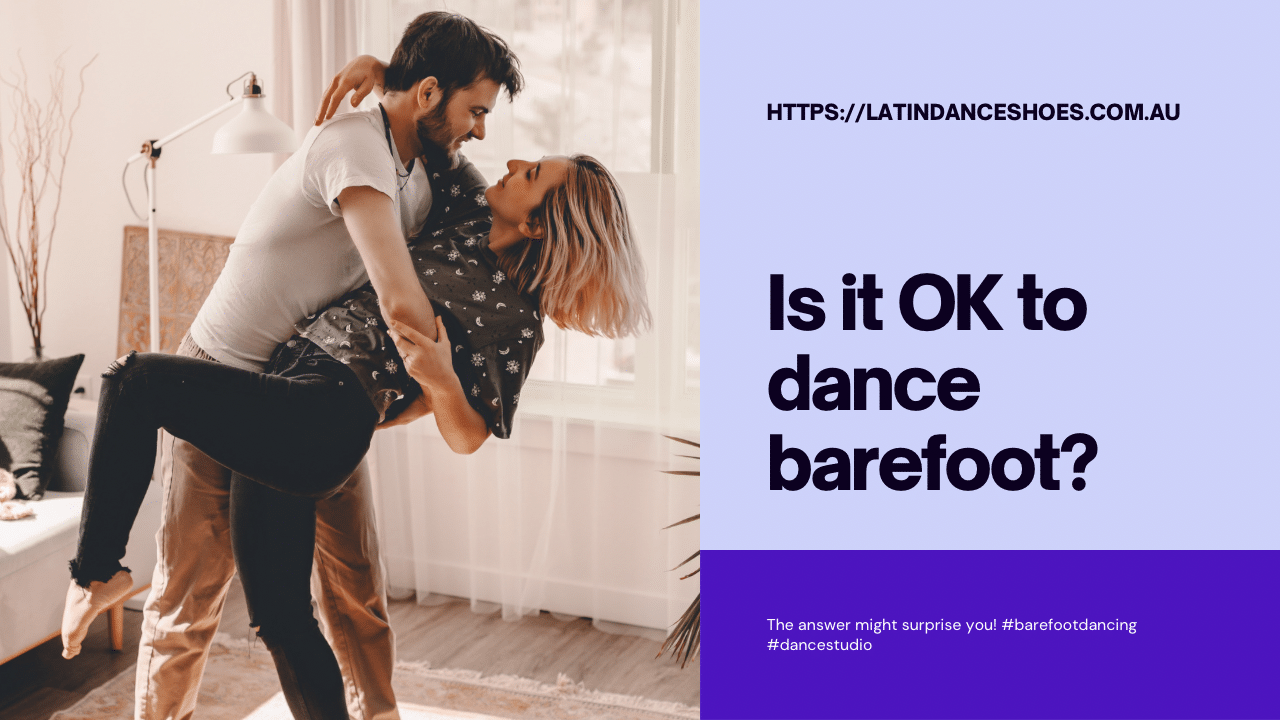
However, the choice to dance without shoes should be made with careful consideration to safety and hygiene. Barefoot dancing can sometimes lead to increased exposure to foot infections and injuries if not practiced in appropriate conditions. Therefore, dancers are advised to stay attentive to their foot health, regularly perform conditioning exercises for strength, and gradually adapt to barefoot dancing to prevent injuries. Selecting the right environment is crucial—clean, safe surfaces are a must—and being aware of any specific needs or precautions can help in making an informed decision.
Key Takeaways
- Yes, it’s ok to dance barefoot! But be aware that it might have a sever impact on your health over the years depending on what style of dance you do.
- Dancing barefoot can enhance bodily awareness but requires cautious consideration.
- We do not recommend to dance latin, ballroom and dance heels barefoot. Instead, opt for a specialised dance footwear.
- Maintaining foot health and selecting safe environments help mitigate injury risks.
- Gradual adaptation and adequate preparation are key for a positive barefoot dancing experience.
- If you are unsure about dancing barefoot, try Latin Dance Shoes Australia’s suede dance shoes. Lightweight and flexible, you will not feel you are wearing dance shoes!
Table of Contents
Dancing Barefoot meaning
Well, this one is quite straight forward. It’s the action of dancing without wearing any dance shoes on. Dancing barefoot means dancer are dancing with their naked feet, without any accessories. So far, I think this is quite obvious! But is it beneficial to dance with or without shoes? Does it have any positive impact on your body or even your mental health? Well, let’s go through different facts and studies!
Is Dancing without shoes trendy?
Dancing barefoot has become a popular trend in recent years, with many people opting to ditch their shoes and dance shoes in favor of a more natural and primal feeling. Yes, you heard it right! The trend of dancing without shoes is now trending up! The one off feeling the ground beneath their feet while they move. Feeling every single stone (and sometimes even glass !). But is it actually okay to dance barefoot?
Is it ok to dance barefoot? Advantages and disadvantages of dancing without shoes. Is moving barefoot on the dance floor good ? Barefoot dance shoes.
Benefits of barefooting and shoeless dancing
Dancing barefoot is a practice common in styles like modern dance and contemporary dance.
1- Improve proprioception
One primary benefit of dancing without shoes is the improved proprioception, which is the body’s ability to sense its position in space. Enhanced proprioception allows dancers to execute movements with greater precision and balance.
2- Increase foot mobility and flexibility
Without the barrier of shoes, dancers experience an increase in foot mobility and flexibility, as they utilise muscles that are not typically engaged when wearing footwear. This can lead to stronger feet and lower leg muscles over time.
3- Improve alignment
Additionally, dancing barefoot can improve alignment, which is crucial in achieving the correct posture for many dance forms.
4- Provide Sensorial feedback
Bare feet provide direct contact with the floor, which can heighten sensory information and foster a more intimate connection with their movements.
5- Allow Muscle activation
Important stabilising muscles in the feet and ankles engage more when dancers are barefoot, aiding in the development of muscular strength and control. While dancing barefoot, dancers often gain a better understanding of their weight distribution, allowing for increased control and fluidity in their movements. Overall, by removing shoes, dancers allow their feet to spread naturally, which supports optimal muscle activation and health.
6- Reduce risks of injuries
Finally, it has an impact on health, as shedding shoes reduce the likelihood of common dance injuries associated with restrictive footwear.
Why Do dancers dance barefoot?
On the one hand, there are several benefits to dancing barefoot. For starters, it allows for greater freedom of movement and flexibility, as your feet are able to move and flex more naturally without the restriction of dancing shoes. This can be particularly useful for dance styles that require a lot of footwork, such as Jazz and contemporary.
Is it ok to dance barefoot?
In addition, dancing barefoot can also help you feel more connected to the music and your surroundings, as you are able to feel the vibrations of the floor and the beat of the music more intensely. This can enhance the overall experience of dancing and allow you to fully immerse yourself in the rhythm. It indeed helps you feel more grounded while dancing. Feeling the beats, vibrations and wooden floor, communicating the energy of the song through the environment.
How do dancers turn barefoot ?
A relevant question would then be: But Clement, if that’s the case, how do dancers turn barefoot? Well, they turn exactly the same way. Transferring their weight on the toes instead of their flat foot. Does it make it harder for dancers to turn and spin without dancing shoes? Yes, definitely. But same as you go train and exercise at the gym, by practicing turns and spins barefoot, you will get more and more use to it ! and spin & turn better, even without wearing dance shoes!
How to turn barefoot
Is it ok to dance barefoot ? Disadvantages of barefoot dancing

On the other hand, there are also some potential drawbacks to going shoeless and dancing in your socks / dancing in your bare feet. For one thing, dancing without shoes can expose your feet to the risk of injury, such as cuts, bruises, and blisters, especially if you are dancing on a hard or uneven surface. This is especially true if you are not used to dancing au Naturel, as your feet may not be as tough or calloused as they would be if you were used to it and a regular barefoot dancer.
Is it ok to dance barefoot?
Furthermore, dancing barefoot in public settings, such as at a dance studio or club, can also pose a risk of spreading foot infections or illnesses, as the floors may not always be the cleanest. This is particularly true in environments where multiple people are sharing the same space and may be walking around barefoot.
Potential Risks of dancing without shoes and Injury Prevention
When dancing barefoot, it is crucial to be aware of potential risks and take proactive steps to prevent injuries. This includes understanding how to protect the feet and being educated about common injuries that can occur.
Protecting the Feet
To prevent foot injuries while dancing barefoot, dancers should maintain clean and dry feet to avoid fungal infections and practice on appropriate surfaces to reduce the risk of abrasions and floor burns. It’s important to inspect the feet regularly for any signs of blisters or calluses, treating them with proper bandages and antiseptics as needed.
- Foot Care Tips:
- Keep feet clean and dry to prevent infections.
- Inspect feet for injuries after dancing.
- Use antiseptic on any cuts or splitting skin.
- Cover any open wounds with a sterile bandage.
Understanding Common Injuries
Common injuries from dancing barefoot include blisters, abrasions, and fungal infections. To minimise these risks, dancers might consider taping their feet, which can offer additional support and reduce friction. If an injury does occur, they should not hesitate to consult with a physician for appropriate care.
- Injury Prevention Strategies:
- Tape feet to decrease friction and support joints.
- Seek medical advice for persistent or severe foot injuries.
- Avoid dancing on harsh surfaces to reduce the chance of abrasions.
Is it ok to dance barefoot ? Our dancer opinion and experience
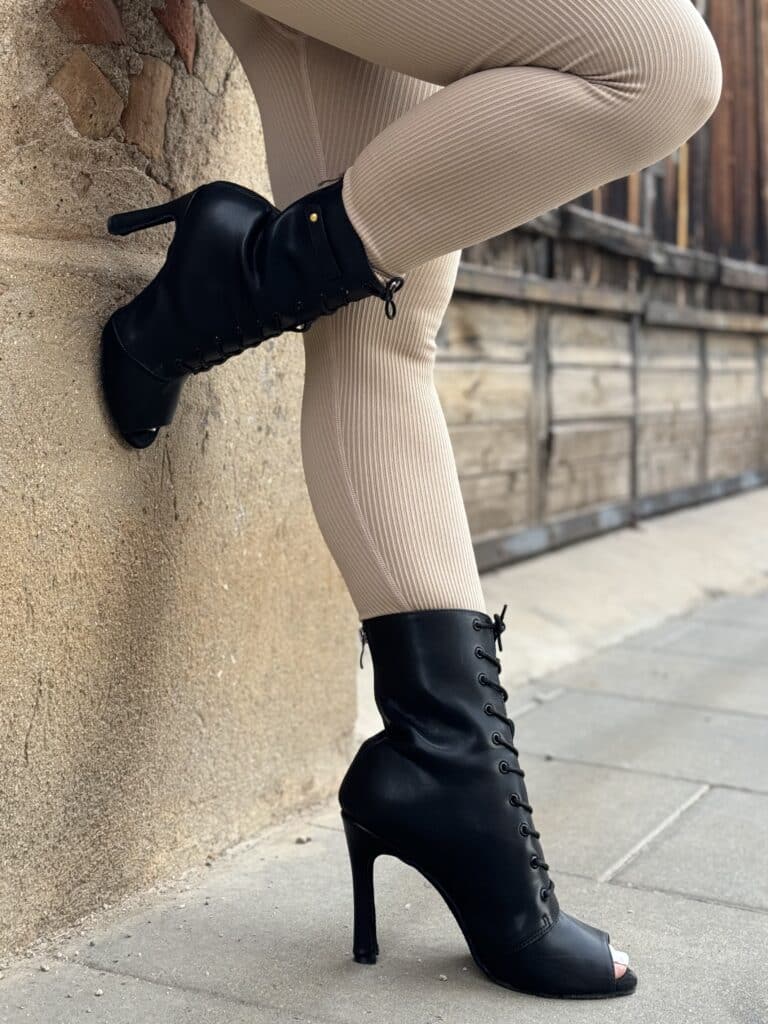
Dance shoes are also customised and made for dancers. Which mean they are designed to protect your feet, ankle and body from dancing injuries. Dancing with naked foot can bring a lot more probably to get injured.
Is dancing barefoot bad?
Is it ok to dance barefoot?
Being a dancer for more than 15+ years, I used to dance without shoes on my feet while learning salsa and Latin Dancing all night. and I can tell you that I now regret it. I since then had Plantar fasciitis on my left foot and feel a slight pain in my articulations and knees. For that reason, we decided to set up this shop and encourage new students and future dancers to dance with shoes on their feet if they dance specific dances such as salsa, bachata, or ballet and tap dances.
Is it Ok To Dance Barefoot? Conclusion Barefoot dance shoes.
Dancing barefoot has many benefits compared to dancing with shoes. For one, it allows for a greater range of motion and flexibility in the feet and ankles. This can lead to improved balance and coordination. Additionally, dancing barefoot can help to strengthen the muscles in the feet and lower legs. It can also be more comfortable and natural for some people, as it allows for a better connection with the ground and a more intuitive sense of movement. Dancing with shoes can also restrict movement and cause discomfort, especially if the shoes are ill-fitting or too tight. Overall, dancing barefoot can offer numerous physical and emotional benefits that can enhance the overall experience of dancing.
Conclusion Is it ok to dance barefoot? And why do Dancers dance barefoot
But from our dance experience and many years of practice, we found that for many type of dances, dancing shoeless isn’t recommended and will only cause more long term injuries. For that reason, we found it safer to wear dance shoes for most type of dance instead of going barefooted.
Is it better to dance with or without shoes?
My Experience as a dancer dancing without shoes
I do remember, one time, I had a salsa student that came to my dance classes. It was back in Byron Bay, couple of years ago when I use to teach there. And, if you know Byron Bay, you know people love to walk barefoot. Hippies is a vibe there! It is trendy! So one day I had one of the new student that came in and insisted to dance barefoot! after explaining the risks, she kept insisting. So I accepted (after making sign a form saying that I will not be responsible if she injure herself!). Well, shortly after, one of the guy stepped on her, and broke one of her toe. Bit of blood, and it wasn’t that bad. But this happen often!
I myself love to dance barefoot. But I do it only with experience dancers, that also dance barefoot with me! Just in case of!
Is it Ok To Dance Barefoot?
Choosing the right environment to dance without shoes
When considering barefoot dancing, the environment is a crucial factor for safety and performance.
Dance Styles: Certain styles such as contemporary dance, which owes much to Martha Graham’s techniques, and African dances, are traditionally performed barefoot to better connect with the floor and allow for a greater range of movement. In contrast, dancers with the Korean National Ballet may opt for ballet shoes to execute precision pointework, while a flamenco dancer generally relies on shoes to produce the characteristic percussive sound.
Studio Settings: A dance studio should have a clean, smooth floor that’s free of debris. The surface should provide enough grip to prevent slipping while allowing for fluid movements. Studios with proper dance flooring reduce the risk of injury, which is pivotal when dancers practice without the protection of shoes.
- Safety Concerns: Sharp objects, rough surfaces, or unsanitary conditions can lead to cuts or infections. It’s advisable to perform a thorough check of the area before starting.
Footwear Alternatives:
- Ballet Shoes: Provide protection while offering a close-to-barefoot experience.
- Dance Socks: Can offer slight protection with added grip, though not as much as shoes.
- Dance Paws or Foot Undeez: Protect the balls of the feet while mimicking the barefoot sensation.
Practice Considerations: Always warm up before dancing barefoot to prepare the feet for the increased demand. Transitioning gradually from shoes to dancing barefoot allows the feet to build strength over time.
By carefully selecting an appropriate environment for barefoot dancing, dancers can safeguard their health while benefiting from the freedom it offers.
Adapting to Barefoot Dance
Adapting to barefoot dance requires a gradual approach to build strength and stability. A barefoot dancer engages directly with the floor, which can enhance connectivity between the body and the dance surface. This direct contact is valued in various dance forms, from the modern techniques pioneered by Martha Graham to traditional practices of the Korean National Ballet.
Key Considerations:
- Weight Distribution: Barefoot dancing affects how a dancer controls weight transfer and balance. Without shoes, weight must be distributed evenly across the entire foot.
- Stability: Stability exercises, like relevés and pliés, help in developing ankle strength for better support and injury prevention.
- Proprioception: This refers to the body’s ability to sense movement, action, and location. It’s heightened when dancing barefoot, as the soles of the feet are exposed to numerous sensory inputs.
Essential Steps for Adaptation:
- Start Slow: Transitioning to barefoot dance should begin with short sessions to avoid overburdening the feet.
- Focus on Technique: Proper alignment and form are crucial to prevent strain on the unshod foot.
- Strengthening Exercises: Foot and calf exercises enhance the muscles necessary for barefoot dancing.
- Foot Care: Regular maintenance, such as treating cuts or building calluses, is essential for a barefoot dancer’s foot health.
It’s important to note that the Martha Graham Dance Company, among others, has showcased the benefits of barefoot dance through expressive movements that convey a sense of earthiness and raw power. Their performances demonstrate how a well-adapted barefoot dancer can achieve remarkable fluidity and grace.
As dancers transition to performing without shoes, understanding the complexities of this dancing style is paramount. It requires time, patience, and commitment to adjust successfully to the nuances of barefoot dance.
Cultural and Historical Context of Dancing Barefoot
Dancing barefoot is deeply embedded in various cultural traditions and historical practices around the world. In contemporary dance, a genre that emerged in the mid-20th century, dancing without shoes is commonplace. This practice emphasises a connection with the floor, allowing dancers to execute movements with more precision and fluidity. Pioneers like Martha Graham have significantly influenced this approach, advocating for the expressive potential of the unshod foot.
Modern dance, as a rebellion against the rigid techniques of ballet, often incorporates barefoot performances. Dancing without shoes in modern dance can convey vulnerability, strength, or freedom, and it facilitates a broad range of expressive motion not easily achieved with footwear.
In different cultures, barefoot dancing holds symbolic meaning. For example, in flamenco, a passionate and intensely emotional Spanish dance form, some dancers choose to perform barefoot. This can be an expression of intimacy and rawness, contrasting the typical use of shoes that accentuate rhythm through percussive footwork.
Many indigenous and traditional dances across the globe have historically been performed barefoot as a way to maintain a close connection to the earth. Dancing barefoot can be seen as an act of respect and an integral part of the spiritual or ritualistic aspect of the dance.
Here is a summary of key points:
- Contemporary Dance: Grounding and connection to the dance floor.
- Martha Graham: Emphasised the expressive potential of dancing barefoot.
- Modern Dance: Symbolises vulnerability and freedom; challenges classical ballet norms.
- Cultural Significance: Barefoot dancing is common in many indigenous and traditional dances as a way to honour a connection to the earth.
- Flamenco: Some dancers perform barefoot to express a deeper intimacy and raw emotion, though this is less traditional.
Frequently asked questions
What are the benefits of dancing without shoes?
Dancing barefoot can lead to enhanced foot strength and flexibility. It also provides dancers with a better sense of connection to the ground, which can improve balance and spatial awareness.
Are there any specific dances that are better performed barefoot?
Contemporary, African dance, traditional dance, lyrical, and modern dance styles are often performed barefoot, allowing for a wider range of motion and more expressive footwork.
Can dancing barefoot help improve my technique?
Dancing without shoes can contribute to the development of proper technique by forcing the muscles in the feet and legs to work more intensely, thereby improving overall strength and control.
What types of surfaces are safest for barefoot dancing?
Sprung wood floors or specialised dance mats are the safest surfaces for barefoot dancing, ensuring appropriate cushioning and reducing the risk of impact injuries.
How does the sensation and control differ when dancing with versus without shoes?
Dancers often experience a greater sensory connection to the floor when dancing barefoot, providing improved control in stabilisation and movement precision, compared to dancing with shoes that might restrict the feet’s natural movements.
Dancing Barefoot Lyrics
“Dancing Barefoot” is a song written by Patti Smith and Ivan Král, and it was originally performed by Patti Smith. Here are the lyrics to “Dancing Barefoot”:
[Verse 1]
She is benediction
She is addicted to thee
She is the root connection
She is connecting with he
[Chorus]
Here I go and I don’t know why
I spin so ceaselessly
Could it be he’s taking over me?
[Verse 2]
I’m dancing barefoot
Headin’ for a spin
Some strange music draws me in
Makes me come on like some heroin/e
[Chorus]
She is sublimation
She is the essence of thee
She is concentrating on
He, who is chosen by she
[Bridge]
Here I go and I don’t know why
I spin so ceaselessly
Could it be he’s taking over me?
[Verse 3]
She is re-creation
She, intoxicated by thee
She has the slow sensation
That he is levitating with she
[Chorus]
Here I go and I don’t know why
I spin so ceaselessly
‘Til I lose my sense of gravity
[Outro]
Here I go and I don’t know why
‘Cause it makes no sense to me
All I know is I can’t be there
The rest is dancing…
Barefoot Ballet Flats Australia
We sell Barefoot Ballet Flats Australia. You can decide to Feel the barefoot dance floor by dancing barefoot or buy some of our barefoot ballet flats Australia and dance socks. They will protect your feet from wooden sprinkles while still making you feel the barefoot dance floor.
Related articles to Barefoot dancing and dance shoes:
Is it Better to Dance With Or Without Shoes?
Salsa Dance Shoes For Beginners
Barefoot dance Floor
#1 Best Guide Latin Dancing Shoes Australia
Dancer Heels: A Comprehensive Guide To Choosing The Best Heels for Dancing
Is it Ok To Dance Barefoot?
Is it possible to do toe-tapping without shoes?
Yes, it is possible to do toe-tapping without shoes. Toe-tapping is a dance step that involves quickly tapping the toes of one or both feet on the ground in time with the music. It can be done while standing in place or while moving across the dance floor. Toe-tapping can be done barefoot or with shoes, depending on the dancer’s preference and the style of dance being performed. Some dancers may choose to do toe-tapping without shoes in order to have a greater connection with the ground and a greater range of movement in the feet and ankles. Others may prefer to wear shoes for the added support and protection they provide. Ultimately, it is up to the dancer to decide whether to do toe-tapping barefoot or with shoes.
Is it Ok To Dance Barefoot?
What is toe tapping dance?
Toe-tapping is a dance step that involves quickly tapping the toes of one or both feet on the ground in time with the music. It is often used in tap dance and other styles of dance that involve percussive footwork, such as jazz and swing. Toe-tapping can be done while standing in place or while moving across the dance floor, and it can be incorporated into various dance routines and combinations. Toe-tapping can be done barefoot or with shoes, depending on the dancer’s preference and the style of dance being performed. It is typically a fast and energetic step that adds rhythmic interest and flair to a dance performance.
Is it Ok To Dance Barefoot?
About Dance and unshod dancing
Dancing is a general term that refers to the movement of the body to music or other rhythmic sounds, often in a structured or improvisational way. Dancing barefoot is a specific type of dancing that involves performing dance steps or movements without wearing shoes. Other types of dancing may involve wearing shoes or specific types of footwear, such as ballet slippers, tap shoes, or Latin shoes.
Is it Ok To Dance Barefoot?
About Latin Dance Shoes Australia
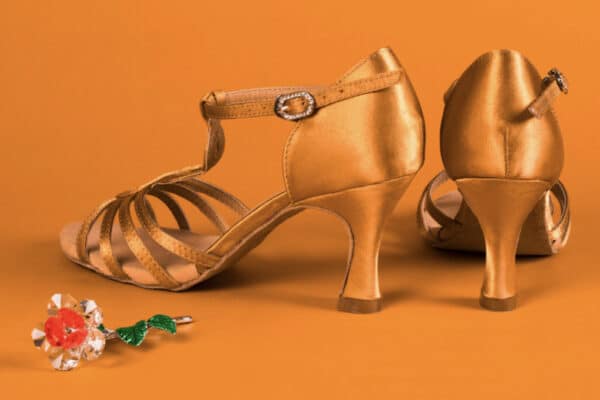 Welcome to Latin Dance Shoes Australia, your one-stop shop for all your dance shoe needs!We understand the importance of dancing with shoes on and shoe-wearing dancing!
Welcome to Latin Dance Shoes Australia, your one-stop shop for all your dance shoe needs!We understand the importance of dancing with shoes on and shoe-wearing dancing!
High quality dance shoes
We offer a wide selection of high-quality dance shoes, specifically designed for Latin dance styles such as salsa, bachata, tango, and cha-cha. Our dance shoes and dancing footwear are carefully crafted by expert shoemakers, ensuring that they are comfortable, stylish, and durable.
Dance shoes for beginners to professionals dancers
Whether you’re a professional dancer or just starting out, we have a variety of options to choose from. We carry shoes for both men and women in a range of sizes, colors, and styles. We have a wide range of Dance heels, Dance boots, Dance sneakers and dance canvas shoes.
Is it Ok To Dance Barefoot?
In addition to our dance shoes, we also offer a range of dance apparel and accessories, including dresses, skirts, and dance bags.
At Latin Dance Shoes Australia, we pride ourselves on providing excellent customer service. If you have any questions or need help finding the perfect pair of dance shoes, don’t hesitate to reach out to our friendly and knowledgeable staff.
Thank you for choosing Latin Dance Shoes Australia. We can’t wait to help you find the perfect shoes for your next dance performance or social event.
Is it Ok To Dance Barefoot?

Is it Ok To Dance Barefoot?
How to clean your Latin Dancing shoes? | Latin Dance Shoes Australia
Is it Ok To Dance Barefoot?
Heels Dance Choreography – Chair Dance
Looking for Latin Dance Classes?
 We offer Latin dance classes in Australia.
We offer Latin dance classes in Australia.
If you’re looking to get your groove on and learn some new dance moves, Join Dance Classes Gold Coast that offer Fitness and Latin dance classes on the Gold Coast are the perfect way to do it. Whether you’re an intermediate dancer or just starting out, these classes offer a range of benefits that will have you dancing with shoes on in no time.
Are you wondering what are the benefits of Latin Dance Classes wearing dance shoes?
First and foremost, Latin dance classes are a great way to get in shape and stay active. With fast-paced, energetic movements and lots of twisting and turning, you’ll be burning calories and toning your muscles in no time. Plus, with the added challenge of learning new dance steps with shoes on and routines, you’ll be sure to stay engaged and motivated throughout the class.
Dancing with no shoes on
In addition to the physical benefits, Latin dance classes also offer a fun and social way to meet new people and make new friends. With the lively, upbeat music and a supportive, welcoming atmosphere, you’ll be sure to enjoy yourself and connect with others who share your love of dance.
Benefits of footwear dancing
One of the key benefits of taking Latin dance classes with shoes on / wearing latin dance shoes is the added support and protection they provide for your feet. Whether you’re performing quick footwork or executing intricate dance steps, the right pair of shoes can help you dance with confidence and avoid injury. From dance sneakers to ballroom shoes, there are a range of options to choose from, so you can find the perfect fit for your dancing style and needs.
Is it ok to dance barefoot?
So why wait? If you’re ready to move, groove and dance on the Gold Coast, sign up for a Latin dance class today and see for yourself the many benefits of dancing with shoes on. Whether you’re looking to improve your physical fitness, meet new people, or simply have a blast, you’ll find it all in these fun and rewarding classes.
Is it Ok To Dance Barefoot?
Shopping For Latin Dancing Shoes: Tips For Finding The Right Pair
Is it Ok To Dance Barefoot?
Dance teacher, music passionate and Latin dancers aficionado!
Founder of Latin Dance Shoes Australia
Is it Better to Dance With Or Without Shoes?
Dec 11, 2023
Introduction to Partner Dance Shoes: Find the Perfect Footwear
Dec 4, 2023
Dance Shoes, Bachata dance shoes, Bachata Shoes, bachata sneakers, Ballroom Dance Shoes, Ballroom dance shoes, Black salsa shoes, Chaussures de danse, Chaussures de danses, Comfortable dance shoes, Custom Dance Shoes, dance boots, Dance shoes Melbourne, Dance shop, Dance Wear, Dancers Life, Latin Dance Shoes, Salsa Dance Shoes, Salsa Shoes, Shoe Types, Sizes Shoes, Sizing Guide Shoes, Swing Dance Shoes, Tango Shoes, Tap Shoes
Further reading
What to Wear with Leopard Print Heels?
Feb 25, 2024
Heels Dance Shoes, Bachata dance shoes, Bachata Shoes, Ballroom dance shoes, Ballroom Dance Shoes, dance boots, Dance Shoes, Dance Wear, Dancers Life, Frequently Ask Questions, heels, Heels for women, Kizomba dance shoes, Kizomba Shoes, Latin Dance Shoes, latin shoes, Salsa Dance Shoes, Salsa Shoes, woman heels, Womens dance boots
What shoes to wear to salsa class ?
Feb 11, 2024

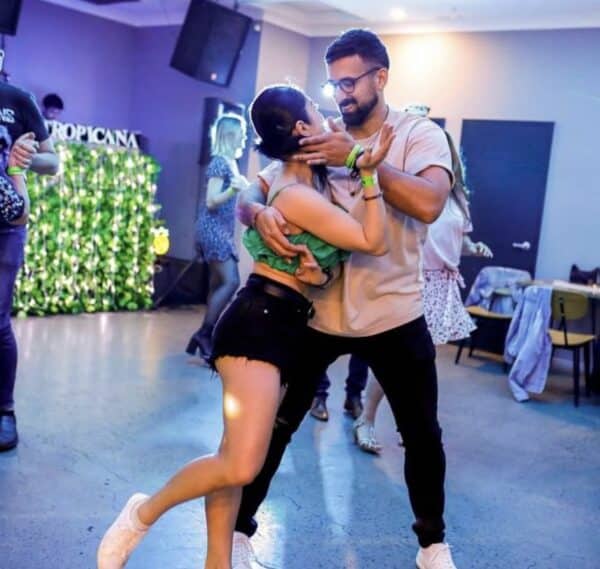 We offer Latin dance classes in Australia.
We offer Latin dance classes in Australia.